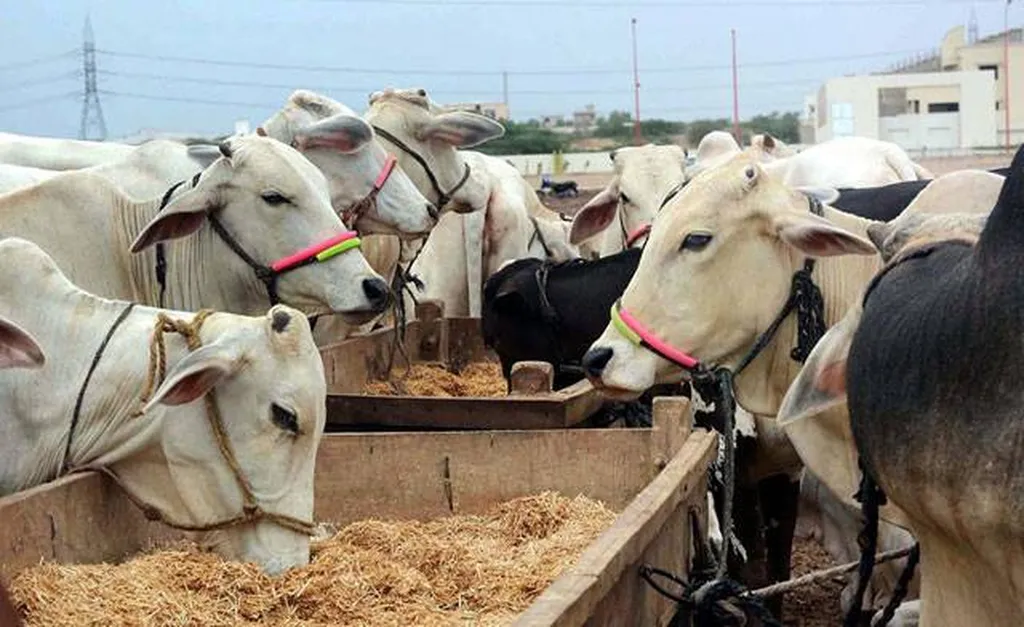In the heart of Pakistan’s Punjab province, a silent battle for genetic resilience is unfolding between two distinct cattle breeds: the globally prevalent Holstein and the indigenous Cholistani. This struggle is not just about survival but about adapting to environmental changes and enhancing disease resistance. A recent study, led by Ahmad Tamroosi from the Department of Animal Science at the University of Zabol in Iran, delves into the mitochondrial genomes of these breeds, uncovering crucial insights that could revolutionize livestock breeding programs.
The study, published in ‘پژوهشهای تولیدات دامی’ (Dairy Science Research), focuses on three critical genes—ATP6, ATP8, and CYTB—within the mitochondrial genome. These genes play pivotal roles in energy metabolism and stress response, making them key players in the cattle’s ability to adapt and thrive. “Understanding the genetic differences in these genes between Holstein and Cholistani cattle is crucial for designing breeding programs that can enhance the adaptability and resilience of commercial livestock,” Tamroosi explains.
The research team analyzed transcriptome data from 40 Holstein cows from the University of Wisconsin and 45 Cholistani cows from the Gujatipir dairy unit in Bahawalpur. They found significant differences in the genetic structure of these breeds, particularly in the mitochondrial genes. For instance, the Holstein breed exhibited more deletion sites in the ATP6, ATP8, and CYTB gene loci compared to the Cholistani breed. Conversely, the Cholistani breed showed specific insertion regions in the ATP6 and CYTB genes, which were absent in the Holstein breed.
One of the most striking findings was the variation in transcriptomic coverage among the three genes. ATP6 showed the highest coverage, while ATP8 had the lowest, with CYTB falling in between. This variation suggests differing levels of genetic activity and potential adaptability between the breeds.
The study also identified several polymorphic regions in the nucleotide and amino acid sequences of the genes. For example, the ATP6 gene had eight polymorphic regions based on nucleotide sequences and three based on amino acid sequences. These polymorphisms included conversions such as threonine-to-alanine and isoleucine-to-valine, which could influence the functional properties of the proteins encoded by these genes.
Moreover, the analysis of conserved regions revealed that the ATP6 gene had a 217 bp conserved fragment, while the ATP8 gene had no conserved regions. The CYTB gene, however, had the most conserved regions, with a length of 605 bp. This indicates that the CYTB gene is more resistant to mutations, which could be crucial for maintaining its function in energy metabolism and stress response.
The implications of this research are far-reaching. By understanding the genetic differences between Holstein and Cholistani cattle, breeders can design programs that enhance the adaptability and resilience of commercial livestock. This could lead to more sustainable and productive dairy farming practices, ultimately benefiting the energy sector by ensuring a steady supply of high-quality livestock products.
As Tamroosi notes, “The results of this study highlight the importance of genetic diversity in livestock breeding. By leveraging the unique genetic traits of indigenous breeds like the Cholistani, we can improve the compatibility and economic lifespan of commercial breeds.”
This research not only sheds light on the genetic differences between Holstein and Cholistani cattle but also paves the way for innovative breeding strategies that can enhance the adaptability and resilience of livestock. As the world faces increasing environmental challenges, such insights are invaluable for ensuring the sustainability and productivity of the dairy industry.

